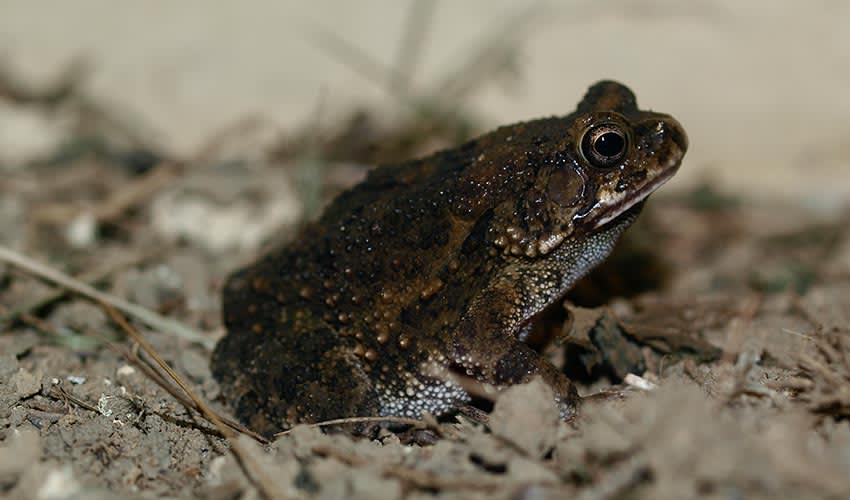From bustling towns and farmlands to forests and savannas, this hardy toad has learned to thrive almost anywhere there’s a bit of water for breeding. Unlike the plump and squeaky rain frogs, the African common toad looks more like the “classic” toad you might picture: warty skin, sturdy body, and strong legs for hopping about. Its brown, gray, or olive coloring helps it blend into its surroundings, whether that’s a muddy puddle or a shady corner of a garden.
What sets the African common toad apart is its amazing adaptability. While many amphibians rely on pristine wetlands or forests, this toad is just as happy in human-altered environments. It shows up in parks, gardens, and even roadside ditches, often becoming one of the most familiar amphibians to people living in towns and cities. Its warty skin doesn’t just give it that classic “toad look”—it also helps retain moisture and offers protection from predators. Behind its eyes, the large parotoid glands secrete toxins that make it an unappetizing snack for would-be predators, a clever defense shared by many true toads.
During the rains, males gather at water sources and produce a loud, guttural trill that can carry far into the night. These choruses are a hallmark of rainy evenings in many African landscapes, filling the air with sound.
Because of its tolerance for living near people, it’s often nicknamed the “backyard toad of Africa.” Its call is so distinctive that in some areas, it’s used by locals as a natural reminder that the rains have arrived. While they may look slow and clumsy, African common toads are voracious insect eaters, gobbling up beetles, ants, and even pesky mosquitoes, making them natural pest controllers. And if you’ve ever tried to pick one up, you may notice it puffing up its body to appear bigger and scarier—a trick that often works on curious predators.
Distribution
 Angola
Angola Benin
Benin Burkina Faso
Burkina Faso Burundi
Burundi Cameroon
Cameroon Cape Verde
Cape Verde Central Af. Rep.
Central Af. Rep. Chad
Chad Congo-Brazzaville
Congo-Brazzaville Côte D’ivoire
Côte D’ivoire DR Congo (Kinshasa)
DR Congo (Kinshasa) Djibouti
Djibouti Egypt
Egypt Equatorial Guinea
Equatorial Guinea Eritrea
Eritrea Ethiopia
Ethiopia Gabon
Gabon Gambia
Gambia Ghana
Ghana Guinea-Bissau
Guinea-Bissau Guinea
Guinea Kenya
Kenya Liberia
Liberia Mali
Mali Mauritania
Mauritania Niger
Niger Nigeria
Nigeria Rwanda
Rwanda Senegal
Senegal Sierra Leone
Sierra Leone Sudan
Sudan Tanzania
Tanzania Togo
Togo Uganda
UgandaAnything we've missed?
Help us improve this page by suggesting edits. Glory never dies!
Suggest an editGet to know me
Terrestrial / Aquatic
Altricial / Precocial
Polygamous / Monogamous
Dimorphic (size) / Monomorphic
Active: Diurnal / Nocturnal
Social behavior: Solitary / Pack / Herd
Diet: Carnivore / Herbivore / Omnivore / Piscivorous / Insectivore
Migratory: Yes / No
Domesticated: Yes / No
Dangerous: Yes / No




